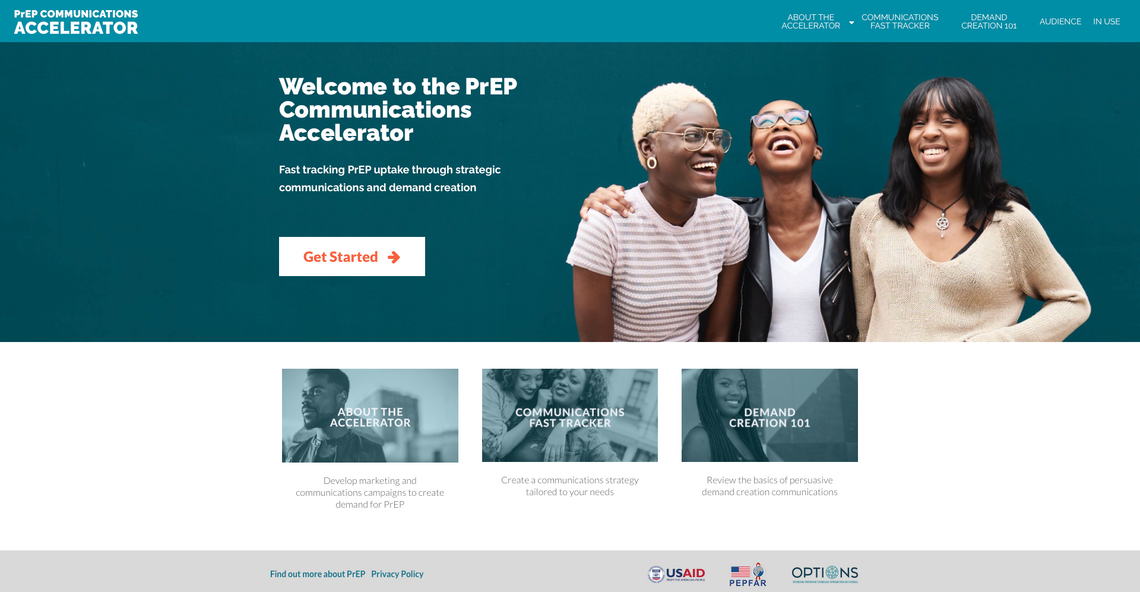OPTIONS: The PrEP Communications Accelerator
The Situation
Oral HIV pre-exposure prophylaxis (PrEP) has been rolled out in Sub-Saharan Africa and has been shown to be up to 90% effective in preventing HIV infection among people who take it consistently —yet demand for it remains low in the most-affected populations. Launching a new HIV prevention product such as PrEP among at-risk groups who may not perceive their risk or be aware of their health options is a complex process, and health programs often lack the budgets, timing, and capacity to develop marketing and communications designed to create demand for life-saving health products like PrEP.
The Insight
Facilitating the development of insight-driven communications for PrEP in resource-limited settings is a sure way to help the public health sector, governments, and NGOs to accelerate demand for PrEP.
The Approach
Following a detailed process including a communications landscape analysis, market research, and content development and testing, McCann Global Health identified needs and gaps when it comes to communicating about PrEP to at-risk audiences. This information went into the development of a resource that helps expedite and sustain demand for PrEP in countries and among populations it is where most needed.
The Outputs
As the communications partner of the OPTIONS Consortium, McCann Global Health created the PrEP Communications Accelerator, designed to fast-track the development of marketing and communications campaigns that create demand for PrEP in Sub-Saharan African countries.
A unique feature of the PrEP Communications Accelerator is the Communications Fast Tracker, which enables users to access a downloadable aggregate of evidence-based and audience-specific demand-creation strategies for engaging at-risk groups through interpersonal and mass media communications. Users select from 6 audience groups —adolescent girls and young women (AGYW), men who have sex with men (MSM), female sex workers (FSW), people who inject drugs (PWID), serodiscordant couples (SDC), or the general population —and 4 settings —national, subnational, community or clinic. From there, they receive a customized communications strategy, including suggested media channels and communication tactics based on available evidence about the population and setting.
Looking ahead, the PrEP Communications Accelerator is expanding to incorporate case studies, planning tools, and examples of PrEP communications throughout the world and—with time—perhaps even set an example of how to support other public health product rollouts.







